Trim or no trim, that is the question!

Trim. Foto by Dmitry Rogovoy
Though trim is one of the basic skills in technical diving, it turns out to be hazardous to health!
Let us look closely at the question. To achieve proper trim, a technical diver should do the following.
- Bend your back and hold it tense
- Lean a little forward or at least ensure that your body is parallel to the horizon
- Stretch out your arms.
- Ensure an even position of your hips or slightly bend them upwards in the hip joint so that they are higher than the backline.
- Bend your knees so that the fins are parallel to the horizon.
- Raise your head and look forward for better balance (and just to see where you are swimming).
As a result, your bodyline gets slightly curved like an arrow. The body is in tension, trying to keep the position and balance while having a heavy twinset or a rebreather on the back. The stages hanging on the single piece webbing are neutral, but when filled with gas, they have a negative buoyancy, which adds to the load on keeping a proper balance.
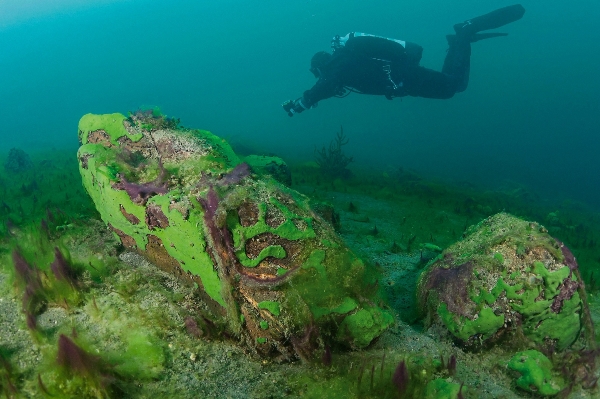
Trim. Foto by Olga Kamenskaya
The body curvature and static tension affect the lumbar spine and cervical spine. I know (and I have heard about) some active divers and instructors who have problems in the above regions of the spine such as bulging and herniated discs, or even vertebral body displacement (spondylolisthesis). Some have even become a bit like “terminators”, with titan parts in their spine. I have my modest experience, being one of the few divers who probably spend more time in trim than all the rest. From 150 to 200 confirmed dives every year for many years in a row (out of which 22 years in trim). Most of them are very long technical dives, as well as cave and ice dives. Therefore, instead of telling about thousands of dives and diving hours, you’d better show your logbooks.
The bending of your spine in trim can also be a reason for health problems in decompression dives! The topic needs research, but the probability is high that the nerve roots connected with the spinal cord get slightly compressed when you are in trim (and if you already have some problems with your back, the probability is 100%). This might cause a decompression problem during the ascent. One must consider this when having deep and long technical dives.
Technical diving has quite a short history, and DIR-oriented technical diving is even younger. Now is a time when the DIR and technical diving pioneers such as active divers and instructors are retiring and most probably will make up (or are already making up) the ‘terminator’ statistics or that of serious spinal problems. Maybe some of them would like to contribute to what I say or confirm my thoughts. Some might argue that trim has nothing to do with the above problems. Well, controversy serves the cause of truth.
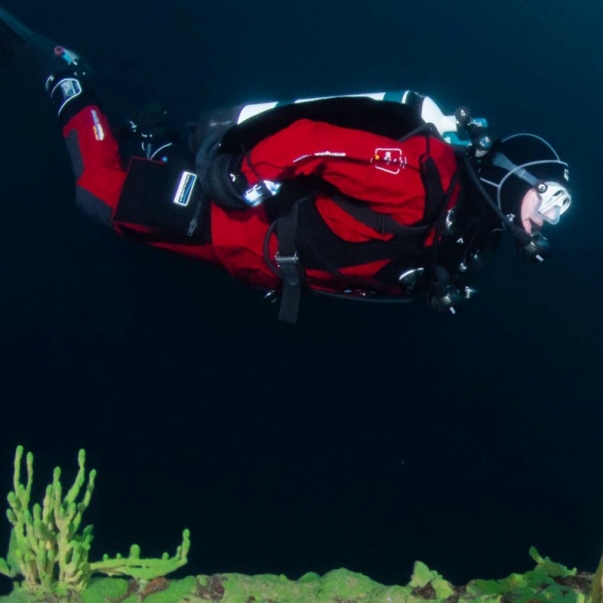
Trim. Foto by Igor Starosvetskij
However, some medical specialists and divers or instructors who are part-time medical doctors can confirm my conclusions. They have patients who are technical divers with sciatica and/or cervical spine problems.
So, what can we do, give up trim? Well, why not.
Let us consider the notorious ‘seahorse’ position and imagine a technical diver moving in this position. The torso is bent backward in the direction of the heels. The head looks forward without any tension, the arms hang. The legs are slightly bent in the hip joint, and the knees are bent like in trim. What we see is that the load on the spine is almost absent. Thus, this position is much more preferable than trim in terms of the diver’s health.
Of course, the ‘seahorse’ position is often rejected (and often, for a good reason) by experienced DIR technical divers with a good training background. I should say at once that the divers who cannot swim in trim cannot keep a proper ‘seahorse’ position either. Having no buoyancy skills, they are tense and busy dealing with overload, unbalance, or the wrong equipment.
To comfort DIR divers, cave divers (and in truth, myself), I can say that the ‘seahorse’ position is unsuitable for cave diving. Those who understand what I mean will agree with this. Unfortunately, the format of the article does not allow explanation for those who do not agree or are unfamiliar with the issue.
So, what can a cave diver who cares about his health do?
Use sidemount! Though it does not solve the whole problem, it eliminates an important part of it, i.e. the heavy load from the twinset or rebreather. It is this load that makes your back tense and in counterweight (or counterbalance if you like) to it.
Another way to reduce the load is the use of a DPV (Diver Propulsion Vehicle). When a cave diver is moving underwater using a DPV, the load on his spine becomes insignificant or even disappears depending on his competence and technique.
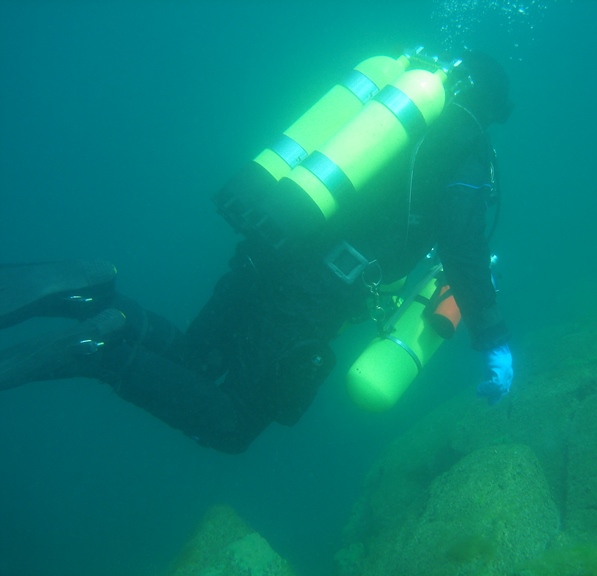
Overloaded out-of-control Seahorse Position. Foto Alexander Yudin
Overloaded out-of-control Seahorse Position. Foto Alexander Yudin

Sidemount. Foto Maxim Kuznetsov (Cavemax)
What should a technical diver do when in open water?
An open-water technical diver is lucky to have more possibilities to lower the load on his spine than a cave diver does. Let us enumerate and explain these possibilities.
- You should not be in trim when dropping down. One of the basic skills in technical diving is a controlled drop in a giant stride position. Not everybody would accept this technique, and most divers are just unfamiliar with it. However, a giant stride is an almost vertical position, which eliminates the load on the spine.
- Bottom time. One should use a ‘seahorse’ position whenever possible. If you are moving along a wall, this position is of no danger, and you do not need trim. Thus you can almost stop using trim, on the condition that you can keep balance and buoyancy when in a ‘seahorse’ position.
- As trim is the most stable position, you mostly need it in case of ascent and decompression. Still, one should take a ‘seahorse’ position whenever it is possible to keep stability and neutral buoyancy without trim.
- During the last stop (or the last long stops), you should be in a ‘seahorse’ position. The last stops are extremely important, and to ensure stability and neutrality, you need a lift bag with a sufficient lift capacity so that you can “hang” on it in a vertical position.
- Other ways to reduce the load on the spine are sidemount and DPV, just like in cave diving.
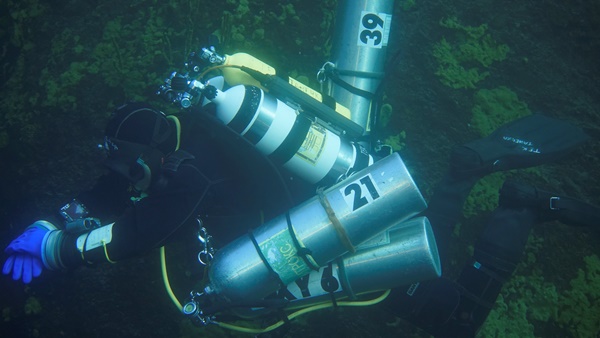
Controlled Seahorse Position. Foto Igor Khanaev
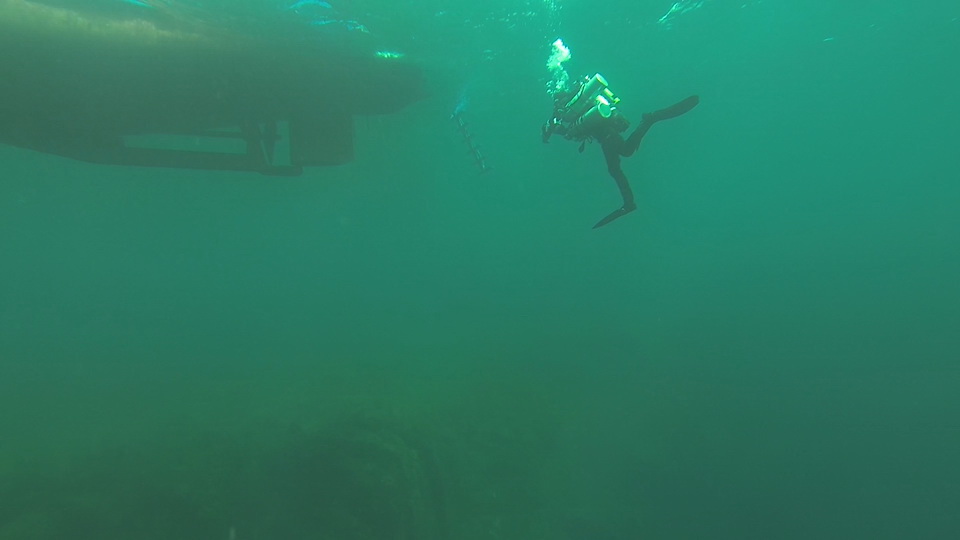
Dropping down. Giant step pozition. Foto Gennady Misan
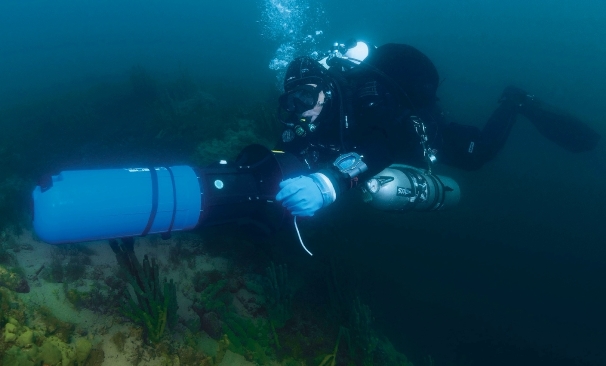
DPV. Foto Olga Kamenskaya
All this and a lot more is explored in detail during the technical diving courses by the dive center BaikalTek and in the masterclasses by the Baikal Technical Diving School, BaikalTek.
Within the framework of the technical and cave diving programs for beginners, you can practice trim, different types of strokes, and standard procedures. You can also train to work with stages, guide lines, and reels, and develop other necessary skills. The advanced programs and masterclasses deal with additional aspects, in particular, reducing or eliminating the health hazard caused by the stable (trim) position.
At the dive center BaikalTek, you can practice sidemount, technical sidemount, and cave sidemount diving. You can also train DPV diving, including deep and cave diving. Besides, you can get qualified as an instructor, up to Advanced Trimix and Full Cave instructor levels.
You are welcome to discuss the presented information. I am open to any comments and correction data and ready to answer your questions.
You can write or call me: Mob/Whats/Teleg +79148870800, http://baikaldiving.ru, misan@baikaldiving.ru, https://www.facebook.com/gennady.misan, @baikaldiving
Sincerely,
Gennady Misan,
IT Full Cave Evaluator TDI, Advanced Trimix IT TDI & IANTD, OWSD IT SDI, CMAS Three Stars Instructor
P. S. Friend’s opinion
In favor of the ‘seahorse’ position. It is believed that this position is used by unbalanced, that is, incompetent technical divers. Yes, it is often the caseo. However, some technical divers and instructors might say, “And what is wrong with it? Why is it not ‘comme il faut’? You have neutral buoyancy, no silt comes up because of your fins’ movement, and you can easily move backwards with a back frog. If one is unable to do that, it is about the competence of the diver rather than the ‘seahorse’ position. The keys to success are training, body- and breath control, and proper adjustment of weights, but not an ideal trim”.
If you want to have a healthy spine (which means good health as the spine is the fundament of our vital activity), you should perfectly and safely perform all the technical diving procedures, both in trim and in a ‘seahorse’ position.